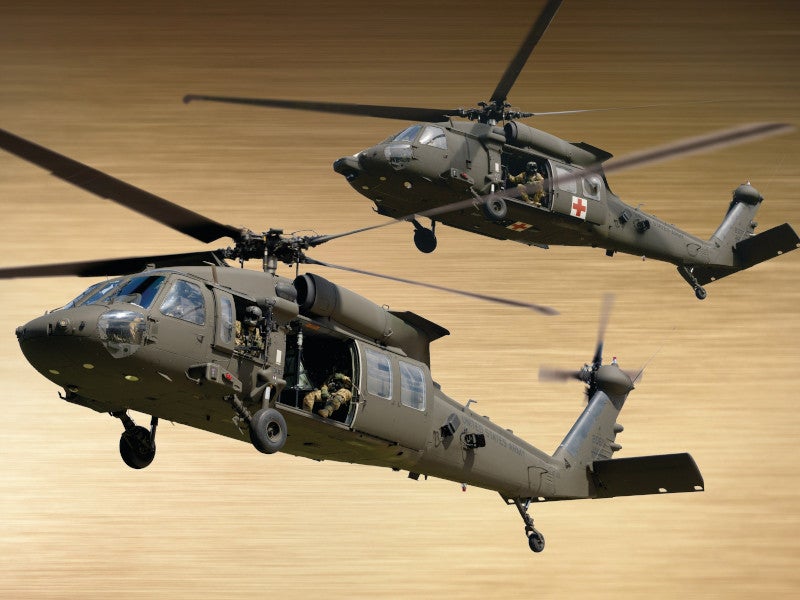UH 60 Black Hawk: From Principle to Contemporary Applications
UH 60 Black Hawk: From Principle to Contemporary Applications
Blog Article
A Comprehensive Guide to the Maintenance and Care of Airplane for Long Life
The long life of an airplane pivots substantially on its upkeep and care, demanding a structured strategy to make certain optimal efficiency and safety. Normal assessments, paired with a systematic maintenance program, serve as crucial components in determining possible issues before they intensify. The problem of the airplane's inside and adherence to governing criteria play essential roles in preserving its value. Yet, understanding the details of these methods can be complex; as a result, it is vital to explore the essential components that add to reliable airplane treatment and the implications of neglecting these duties.
Importance of Regular Upkeep
Normal upkeep is vital for the safety and security, efficiency, and durability of airplane. An organized method to upkeep guarantees that all components function optimally, therefore minimizing the risk of mechanical failure during operation. Normal examinations and servicing allow technicians to recognize potential concerns before they intensify into significant troubles, making sure that the aircraft remains in conformity with aviation guidelines.
Moreover, keeping an airplane according to the maker's standards is critical for maintaining its worth. A well-documented maintenance background can improve resale leads and instill self-confidence in possible customers. In addition, routine upkeep adds to functional performance, as it assists to maximize fuel intake and performance metrics, causing cost savings with time.
In addition, normal maintenance adds to the total safety and security of trip procedures (uh 60). By dealing with deterioration immediately, drivers can minimize risks connected with aging airplane systems. This positive method not just shields the lives of guests and team yet likewise safeguards the airplane itself versus disastrous failures

Daily Inspection List
Just how can pilots and maintenance staffs guarantee the airplane is in ideal condition prior to each flight? The answer depends on a complete everyday assessment list, which serves as a crucial protocol to identify potential issues that could jeopardize safety and security and efficiency. This checklist should encompass several vital areas, consisting of outside and indoor assessments, as well as practical checks of critical systems.
Starting with the outside, teams ought to examine the airframe for any visible damage, leaks, or indicators of rust. Interest needs to be paid to manage surfaces, landing equipment, and the problem of tires. Relocating to the interior, the team must confirm that all tools and controls are operational, guaranteeing that digital systems are functioning properly.

In enhancement to architectural checks, it is vital to inspect gas degrees and validate that all called for papers, consisting of enrollment and weight and balance information, depend on day. Ultimately, an evaluation of emergency tools, consisting of life vests and fire extinguishers, must be conducted to make certain compliance with safety policies. By carefully following this everyday inspection checklist, pilots and maintenance staffs can considerably improve the security and integrity of their aircraft.
Scheduled Maintenance Programs
Scheduled upkeep programs are crucial for the lasting safety and performance of aircraft operations. These programs are designed to guarantee that all aircraft parts go through regular assessments, upkeep, and required repair work at fixed periods. By sticking to a structured upkeep schedule, operators can dramatically minimize the danger of in-flight failures, improve airplane integrity, and prolong the life-span of vital components.
Commonly, set up upkeep is categorized into various levels, including A, C, b, and d checks, each with unique needs and thoroughness. A checks are normally more constant and concentrate on basic minor fixings and aesthetic assessments, while D checks are much more extensive and happen much less regularly, involving extensive disassembly and overhaul of the airplane.
Governing bodies, such as the FAA and EASA, mandate compliance with specific upkeep routines based upon aircraft type and use. Operators must maintain careful documents of all maintenance carried out to demonstrate compliance and promote inspections. Moreover, the integration of predictive maintenance innovations can additionally improve the performance of scheduled programs by determining prospective concerns before they intensify, thus ensuring that aircraft stay in optimum problem and prepared for safe operations.
Treatment for Airplane Interiors
Caring for airplane insides is crucial not just for guest comfort however likewise for preserving the total value and safety and security of the aircraft. Normal cleaning and maintenance of resource the indoor components contribute dramatically to a favorable flying experience while maintaining the airplane's aesthetic appeal.
To make certain optimum treatment, it is necessary to develop important site a routine cleaning schedule that consists of vacuuming rugs, wiping down surface areas, and sanitizing high-touch areas. Furniture and seats should be inspected for deterioration, with any kind of damages promptly addressed to stop more damage. In addition, attention has to be provided to the galley and lavatory areas, which call for thorough cleaning and restocking of products to maintain hygiene.
Additionally, making use of appropriate cleaner is essential; rough chemicals can harm finishes and materials, so it is advisable to use items specifically developed for airplane insides. Regular evaluations should also be carried out to determine any kind of maintenance needs, such as replacing worn-out seat covers or repairing window shades. By focusing on the treatment of aircraft interiors, drivers can improve the overall traveler experience and safeguard the financial investment in their airplane.
Understanding Regulatory Compliance
Regulative conformity is a vital facet of aircraft upkeep, often needing operators to adhere to a complicated framework of neighborhood, national, and global criteria. This structure is largely developed by aeronautics governing bodies such as the Federal Aeronautics Administration (FAA) in the United States and the European Union Aviation Safety Firm (EASA) in Europe - uh 60. These companies state laws that regulate various aspects of airplane upkeep, including airworthiness, safety protocols, and functional procedures

Furthermore, operators must remain informed concerning adjustments in laws and join training programs to make sure that their staff is educated concerning compliance requirements. Failing to comply with these laws can cause severe charges, consisting of fines, grounding of airplane, or loss of certification. Understanding and adhering to regulative conformity is extremely important for the durability and safety of airplane procedures.
Verdict
In verdict, the upkeep and treatment of airplane are extremely important for guaranteeing long life, safety and security, and functional performance. Interest to the airplane's inside and compliance with regulative criteria considerably add to protecting its value.
The long life of an airplane pivots considerably on its upkeep and care, necessitating you could try this out an organized approach to ensure optimal efficiency and safety and security. By carefully following this day-to-day evaluation checklist, pilots and upkeep teams can considerably boost the safety and security and integrity of their airplane.
These programs are made to make certain that all airplane components go through normal evaluations, maintenance, and necessary repairs at established intervals. By focusing on the treatment of airplane insides, operators can boost the general guest experience and secure the investment in their aircraft.
In final thought, the upkeep and treatment of airplane are paramount for making certain long life, safety and security, and operational efficiency.
Report this page